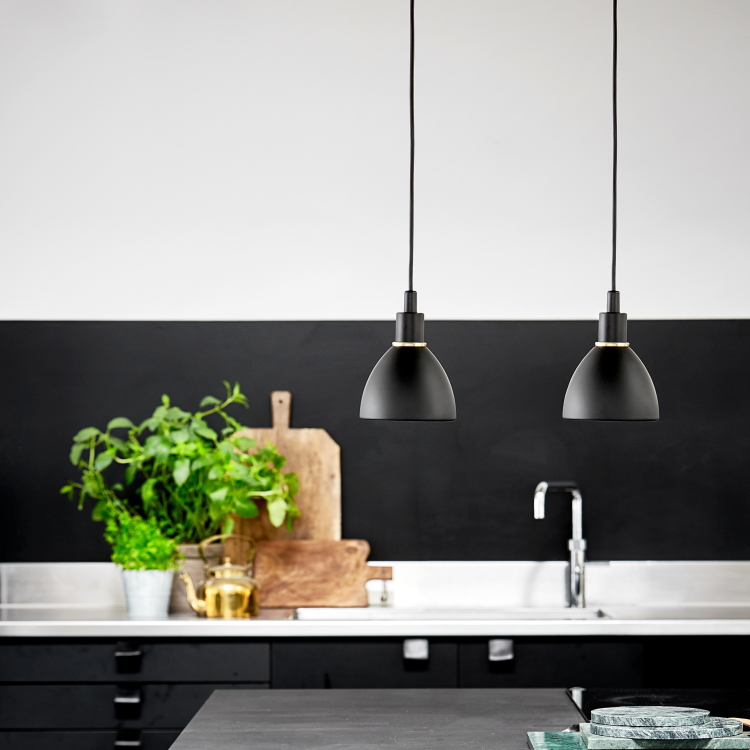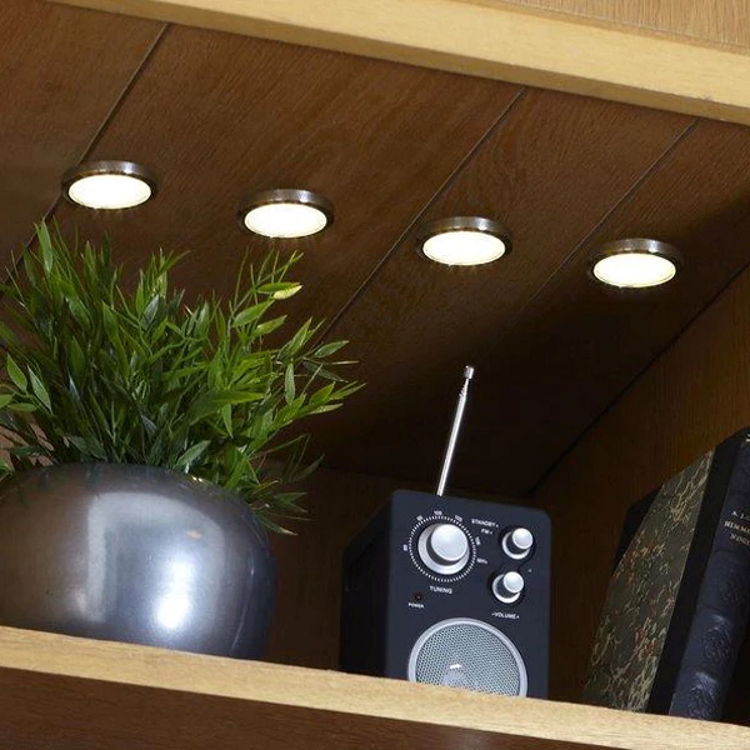How to Light Your Kitchen Like a Pro
Proper lighting is vital for your kitchen. It helps to create a functional and stylish kitchen space that you, your family and friends can all enjoy. There are plenty of things to consider when choosing your kitchen lights, like space, room design and functionality.
Read our guide below for tips and tricks on choosing your perfect kitchen lighting. Afterwards, you can view our range of kitchen lights.

How to make the most of your space with kitchen lighting
Space is important too. Your aim is to build layers of light throughout the kitchen, to open up the room, help you perform tasks and highlight areas that need it. These are the roles of ambient, task and accent lighting, which you can learn more about on the types of light useful resources page.
Different sizes and styles of kitchen have different lighting needs. The space you have will influence what types of light fixtures you’ll want to go for and depending on the shape, different areas will need accentuating.
With a lower ceiling, you’ll be better off with lights that are closer to the ceiling. This will illuminate a wider area and make the room feel less cramped. You’ll want to avoid pendant lighting for instance, which might be too close to head height, though pendants are a great choice for higher ceilings. Recessed downlights are a solid option, but for a different style you could look at track lighting. Track lighting works well for narrower kitchens, with one long fixture providing a sleek, streamlined style. Track fixtures are also adjustable and easy to install.
A great way to maximise space is with LED strip lights, as they can be placed into the walls or ceiling. They can fit along any wall too, making them flexible design-wise. Strip lights work particularly well under kitchen cabinets. Under-cabinet lighting adds another layer of light, highlighting specific areas and can double up as task lighting.
Now that you’ve thought about the space you’re working with, let’s look at the types of light you’ll want...
Task lighting - keep functionality in mind
Think about what tasks require lighting in your kitchen. This will help you decide the placement and brightness of your task lights. You’ll want lighting for your worktop, cabinets and kitchen table, if you have one.
Recessed downlights are sleek, versatile and easy to install, allowing you to be flexible with where you place them. They are great for spotlighting your dining room table or worktops, lighting your way as you eat or prep. Install an individual switch for them to build layers, along with your general light source.
A good alternative to recessed downlights are spotlights. They achieve the same effect, but they are easily adjustable, more targeted and offer a different style.
Under cabinet lights illuminate countertops, which is helpful for food preparation or grabbing a drink in the middle of the night. As mentioned, strip lights work perfectly under cabinets, but alternatively you could try recessed downlights or a classic strip lamp.

Ambient/General lighting – your main light source that fills the room
Flood the entire kitchen evenly with a general light source – in most cases, this will be from the ceiling.
The most popular options include recessed downlights, LED strip lighting, pendants, chandeliers, and track lighting fixtures. Each fixture has its own qualities, but how effective they are will depend on the size and shape of your kitchen.
Pendants and chandeliers work great with higher ceilings but might feel a bit cramped in a smaller kitchen. For lower ceilings, something less prominent will be a better fit, like recessed downlights or track lighting.
Pendant ceiling lights look stylish, sleek and have a wide range of designs available so you should find something you like the look of. Pendants are great over a breakfast bar or kitchen island, providing atmosphere and class to your dining experience.
Some larger kitchens might need multiple fixtures to fully illuminate the room. Recessed downlights are a good option for this as they are easy to install, and you can fit multiple fixtures without making the ceiling look cluttered. You could also include two separate fixtures, like pendant lights in the centre of the room with downlights or strips targeting other areas, doubling up as accent lighting. Speaking of accent lighting...
Accent lighting – add the finishing touches to the kitchen
Accent or decorative lights are designed to create mood and atmosphere. They are more targeted than ambient or task lighting as they highlight specific objects or areas, like a house plant, wall art or table centrepiece.
Of course, this is the last layer to add, after you’ve decided on your ambient and task lighting first. Accent lighting is about playing around with different styles and fixtures, finding the perfect areas to highlight and create your ideal kitchen atmosphere.
Wall lights and LED strips are fantastic options for adding another layer of warm light to really make your kitchen feel special. Use these lights to highlight a particular feature or part of the room that you want to stand out to guests.
Safety considerations – IP Rating
Just like with bathroom or garden lighting, you need to consider moisture near your kitchen lights. Light fittings in areas with high moisture levels need to be designed to keep water from entering and reaching the hazardous parts. You can see if your lights are up to the job, by checking the IP rating – this is a two-digit number that tells you the level of protection against solid objects and water.
Look for IP20 rated lights for your kitchen, to avoid damage from steam and condensation caused by cooking or boiling the kettle.

